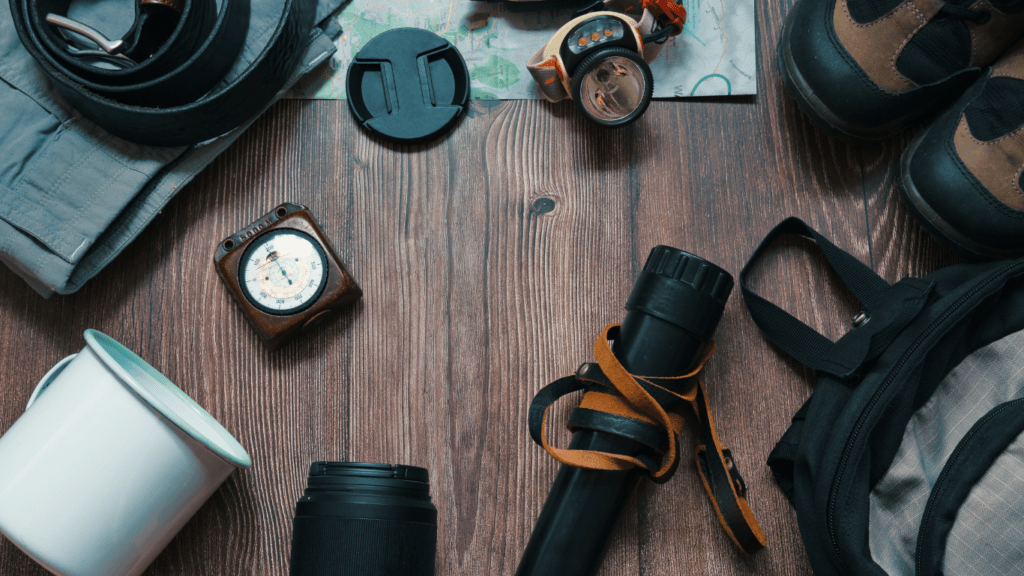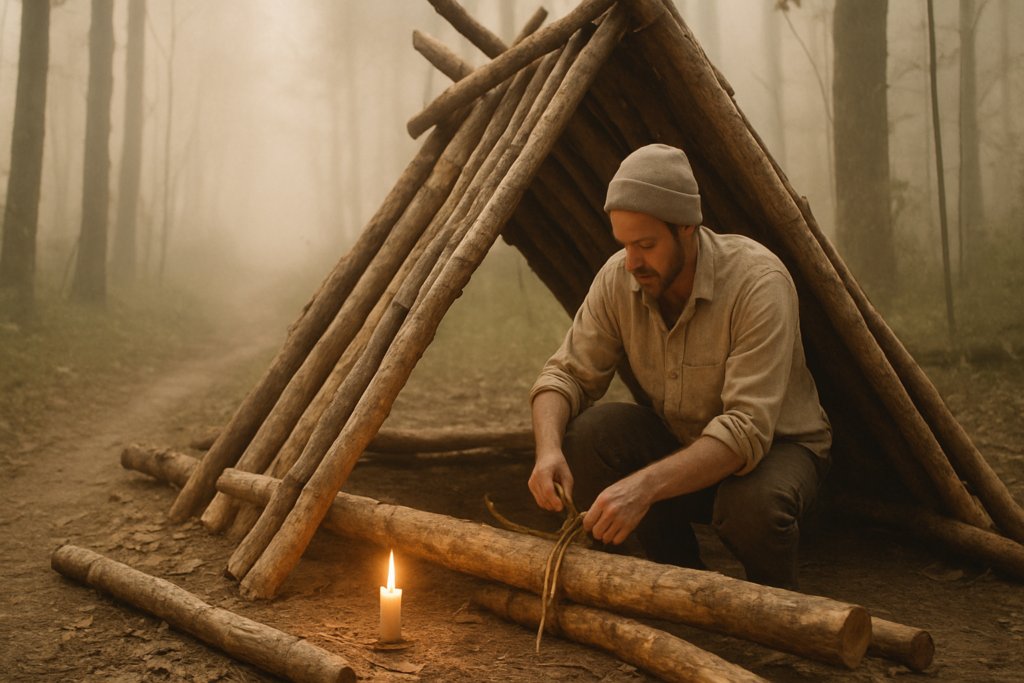Understanding Forest Survival
Surviving in a forest requires more than basic knowledge; it demands understanding the environment’s unique challenges. Forests can be unpredictable, with variable weather and diverse wildlife. Familiarity with these aspects prepares you for unexpected situations.
Importance of Knowledge
Knowing the terrain and local ecosystem is vital. Forest landscapes vary. Some have dense undergrowth, while others have tall, spaced-out trees. Understanding these differences aids in navigation and finding resources.
Weather Patterns
Forests often experience sudden weather changes. Hot days can quickly turn into cold nights. Rainfall can lead to slippery trails and rising water levels in streams. Preparing for these shifts ensures you stay dry and warm.
Wildlife Awareness
Forests are home to various wildlife species. Encountering animals, some potentially dangerous like bears or venomous snakes, is possible. Knowing how to react and avoid these encounters is crucial for safety.
Basic Survival Skills
Equipping yourself with basic survival skills can be lifesaving. Skills like:
- building a shelter
- starting a fire
- sourcing clean water
are fundamental. These abilities ensure you can create a safe, warm environment and prevent dehydration or hypothermia.
Health and Safety Precautions
Maintaining health in the forest is critical. Carrying a first-aid kit and knowing how to treat common injuries, like cuts or insect bites, can prevent minor issues from becoming serious. Safe food storage and consumption also protect against illness.
Understanding the complexities of forest survival builds a solid foundation for any adventure. Preparing for the natural elements and enhancing your survival skills increases your ability to manage and enjoy forest expeditions.
Essential Tools for Navigation
Navigating forests requires specific tools that ensure you stay on the right path. Accurate navigation is key to overcoming the challenges posed by vast, dense wilderness areas.
Compass
A compass is fundamental for wilderness navigation. It provides direction, allowing you to determine your course relative to North. I recommend a orienteering compass for its precision. Look for features like a transparent baseplate and rotating bezel for ease of map alignment. Ensure the compass has global magnetic correction if traveling internationally. Regularly practice using it with a topographic map to familiarize yourself with its operation.
GPS Devices
GPS devices offer advanced navigation capabilities. They use satellite signals to provide real-time location data. Modern GPS units include features such as preloaded topographic maps and waypoint marking. I suggest choosing a rugged, waterproof model with long battery life. Garmin GPSMAP and DeLorme inReach are reliable brands. Make sure to update maps and carry extra batteries or a portable charger. Also, learn manual navigation skills as backups in case of device failure.
Shelter and Sleeping Gear
Surviving in the wild hinges on proper shelter and sleeping gear. It ensures comfort and protection from the elements.
Tents and Tarps
A high-quality tent acts as a mobile home, providing critical protection from weather and wildlife. I recommend choosing a lightweight, waterproof tent made of durable materials like ripstop nylon. For quick setups, freestanding tents with aluminum poles work well. Tarps also offer versatility and can be used for various shelter configurations. When selecting a tarp, look for one that’s waterproof, UV-resistant, and includes reinforced grommets for easy setup. Add these to your pack for a reliable sleeping area.
Sleeping Bags
A good sleeping bag maintains body warmth and ensures a restful night’s sleep. Insulation type matters; down is lighter and more compressible, while synthetic performs better in wet conditions. I suggest a sleeping bag rated for temperatures 10°F lower than expected conditions to stay warm during unexpected cold snaps. Look for features like a hood and draft collar, which enhance heat retention. Keep the sleeping bag’s packed size and weight in mind to balance comfort and portability.
Fire Starting Equipment

Having reliable fire starting equipment is essential for survival in the wild. It aids in warmth, cooking, and signaling for help.
Lighters and Matches
Lighters and matches are straightforward and effective tools for starting a fire. I recommend carrying a high-quality butane lighter, as it functions well in various conditions. Waterproof matches are crucial since they ignite despite being wet, ensuring fire in damp environments. Store both in a waterproof container.
Ferro Rods and Fire Starters
Ferro rods and fire starters serve as robust alternatives when lighters and matches fail. Ferro rods, made from a mix of metals like ferrocerium, produce hot sparks when struck with a metal striker. Magnesium fire starters, which include a block of magnesium and a striker, are excellent in wet conditions, providing shavings that ignite even when moist. Both of these tools are reliable for creating a fire under challenging circumstances.
Food and Water Procurement
Finding clean water and suitable food is essential for survival in the wild. Knowing how to procure these resources efficiently can make a significant difference in any survival situation.
Water Filters and Purification Tablets
Clean water is critical. Compact water filters and purification tablets help ensure safe drinking water even from natural sources. I always carry a portable water filter, like the Sawyer MINI, which removes bacteria and protozoa from water. This lightweight filter is excellent for filtering water directly from streams or ponds.
Purification tablets, such as Aquamira or Potable Aqua, provide a chemical method to make water safe to drink. They’re particularly useful when water sources are questionable. These tablets kill bacteria, viruses, and parasites, making them a reliable backup if my filter becomes clogged or damaged. Storing them in a waterproof container ensures they stay effective.
Portable Stoves and Cooking Gear
Cooking in the wild requires reliable equipment to prepare food safely. I recommend using portable stoves like the Jetboil Flash, which boils water rapidly and is fuel-efficient. These stoves are compact and easy to set up, making them ideal for quick meals. Consuming warm food can provide necessary energy and improve morale in challenging conditions.
Cooking gear, including lightweight pots and utensils made from titanium or aluminum, makes meal preparation and cleanup easier. Packable mess kits often come with nested components, reducing bulk in my backpack. This gear ensures that I can prepare, cook, and eat with minimal hassle, maintaining my energy and readiness for the challenges ahead.
First Aid and Safety Kits
Having first aid and safety kits can be lifesaving in forest survival scenarios. These kits help address injuries, illnesses, and emergencies swiftly and effectively.
Basic First Aid Supplies
- Assembling a comprehensive first aid kit is essential for handling common injuries in the wild. Include adhesive bandages (various sizes), sterile gauze pads, and adhesive tape to treat cuts and wounds.
- Pack antiseptic wipes, antibiotic ointment, and tweezers to clean wounds and remove splinters or ticks.
- Include pain relievers like ibuprofen or acetaminophen, which can alleviate discomfort from injuries and reduce fever.
- Add antihistamines, such as diphenhydramine, to manage allergic reactions.
- Finally, pack blister treatment supplies, including moleskin and blister pads, to prevent and address friction-related injuries.
Emergency Signaling Devices
Including emergency signaling devices in your safety kit enhances your ability to get help when needed. Carry a whistle capable of producing 120 decibels or more, as it’s effective for long-distance signaling. Pack a signal mirror, which can reflect sunlight and catch the attention of rescuers from afar. Include highly-visible signal flares for low-light or nighttime use. Additionally, pack an emergency GPS locator beacon, like the Garmin inReach, which can send your location to emergency services even in remote areas.
Multi-Use Survival Tools
Multi-use survival tools offer versatility and efficiency in the wild. Having the right tools can mean the difference between a manageable situation and a dire one.
Multi-Tools and Knives
A multi-tool packs multiple functionalities into one compact device. I recommend carrying a high-quality multi-tool, such as the Leatherman Wave+, which includes pliers, wire cutters, screwdrivers, and a knife blade. These tools are vital for various tasks (e.g., cutting ropes, repairing gear).
Knives serve numerous purposes in forest survival. Fixed-blade knives are preferred for their strength and reliability; the Morakniv Companion is an excellent choice, known for its sharpness and durability. Use knives for shelter building, preparing food, and protection. Keeping knives sharp is crucial; a portable sharpening stone ensures they remain effective.
Saws and Axes
Saws and axes are indispensable for wood processing. Compact folding saws, such as the Bahco Laplander, make cutting small to medium branches manageable. They fold for safety and are easy to carry. Use saws for firewood, shelter building, and clearing paths.
Axes are essential for heavy-duty chopping tasks. The Fiskars X7 Hatchet combines durability with efficiency, suitable for splitting wood and carving. Small hatchets are easier to carry while still offering significant power. Proper maintenance, including sharpening and oiling, keeps saws and axes in optimum condition.
Compact and versatile tools streamline survival tasks. Choose items that offer reliability and multiple uses to enhance your preparedness in the forest. By equipping yourself with multi-tools, knives, saws, and axes, you’ll be well-prepared for various challenges in forest survival.
Clothing and Footwear
Appropriate clothing and footwear play crucial roles in forest survival. Proper attire ensures protection against the elements, while sturdy boots safeguard feet from rough terrain.
Weather-Appropriate Clothing
Selecting clothing suited to the weather conditions is essential. For cold climates, I layer my clothing. This includes a moisture-wicking base layer, an insulating mid-layer, and a waterproof outer layer. Examples of insulating layers are fleece jackets or down vests. In warmer climates, I opt for lightweight, breathable fabrics, such as moisture-wicking shirts and convertible pants. UV-protective clothing is also beneficial for shielding skin from sun exposure. Always carry a compact, foldable rain jacket made of materials like Gore-Tex to stay dry during unexpected showers.
Durable Boots
Reliable, durable boots are indispensable for forest survival. I choose boots with sturdy soles made of Vibram or similar materials for excellent traction. Ankle support is another key feature, preventing injuries on uneven ground. Waterproofing is essential if traversing wet areas, with materials like Gore-Tex providing water resistance while maintaining breathability. Brands like Salomon and Merrell offer options that match these criteria. Breaking in new boots before an expedition ensures comfort and prevents blisters, making challenging hikes more manageable.



 Mindfulness & Nature Wellness Specialist
Eve Macleod is a certified mindfulness and meditation instructor who has spent years cultivating her passion for connecting wellness practices with the natural world. At Whisper Forest Ways, Eve focuses on guiding readers through techniques that harness the power of nature to promote mental, emotional, and physical well-being. Specializing in forest bathing, nature-based meditation, and eco-therapy, Eve helps readers discover how nature can enhance mindfulness practices and deepen relaxation. She believes that the natural world holds untapped potential for personal healing, stress relief, and spiritual growth, and through her articles and tutorials, she invites everyone to embark on a journey toward a more peaceful and centered life.
Mindfulness & Nature Wellness Specialist
Eve Macleod is a certified mindfulness and meditation instructor who has spent years cultivating her passion for connecting wellness practices with the natural world. At Whisper Forest Ways, Eve focuses on guiding readers through techniques that harness the power of nature to promote mental, emotional, and physical well-being. Specializing in forest bathing, nature-based meditation, and eco-therapy, Eve helps readers discover how nature can enhance mindfulness practices and deepen relaxation. She believes that the natural world holds untapped potential for personal healing, stress relief, and spiritual growth, and through her articles and tutorials, she invites everyone to embark on a journey toward a more peaceful and centered life.
